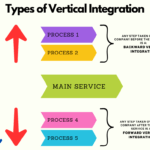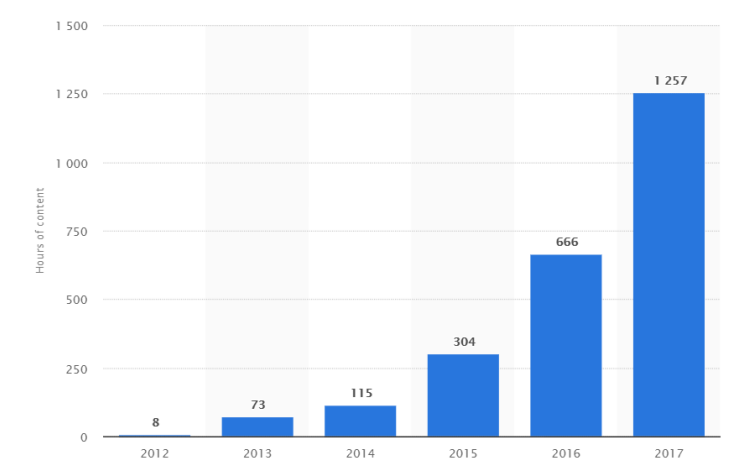We will discuss Netflix’s vertical integration strategy with some examples of how it has applied this strategy that many companies are using. We will see how this streaming giant has grown more than its competitors by simply using this strategy. The advantages and disadvantages of using this business model and how it affects this company will be discussed as well. Netflix began in 1997 as a company that rents DVDs but it changed its business model to start streaming online.
What is vertical integration?

Vertical integration is a strategy used by companies to take control of some steps in their supply chain in order to improve their efficiency, provide better service or products to customers, or increase their profit margins. The steps of the supply chain may include sourcing raw materials, manufacturing, selling, distribution, or provision of customer support. A company may decide to take charge of two or more of these steps instead of relying on a third party.
When a company takes charge of the steps before its main service that it provides, it is said to be using a backward vertical integration. Also, when a company takes control of the steps after its main service that it provides, then the company is said to be vertically integrated forwards. So what type of vertical integration is Netflix using?
See also: Starbucks Vertical Integration Strategy
Is Netflix vertically integrated?
Netflix is vertically integrated by producing its own movies and owning its own studios. It started as a movie distribution company but has now integrated vertically by production of its own exclusive content without having to seek licenses for the movies of other producers. This has helped the company shorten production time, make more profits, and produce content tailored to its audience’s needs.
This strategy aided the company’s growth to become one of the companies with vertical integration. Netflix’s vertical integration strategy has been beneficial by helping it to stay ahead of its competitors in the world of entertainment.
This streaming giant has now expanded to several countries of the world.
When did Netflix vertically integrated?
Netflix vertically integrated in January 2012 by producing its own movie, Lilyhammer, a television series regarded as “the first time Netflix offered exclusive content“. The company has gone further since it started vertical integration in 2012 to produce or co-produce other movies and shows that are together called Netflix originals.
Related: Amazon’s Vertical Integration Strategy
Is Netflix an example of forward integration?
Netflix is an example of a backward vertical integration and not a forward integration because it was created as a platform for the distribution of films and TV shows that were made by content creators; however, Netflix started producing its own content instead of solely relying on content creators. This, therefore, places Netflix as an example of a backward vertically integrated company.

See also: Nike’s Supply Chain Issues and Management
How does Netflix’s vertical integration strategy work?
Netflix’s vertical integration strategy works through the production of its own movies and shows instead of relying solely on the content produced by different studios. Since the main service offered by Netflix when it started was the distribution of films and movies produced by different creators; it means by creating the content itself, the company is vertically integrating backward. The main reason for Netflix’s vertical integration strategy is to control as much of the supply chain as possible in order to reduce costs, attract more subscribers, and improve efficiency.
Examples of Netflix’s vertical integration strategy
- Acquisition of game studios
- Acquiring other movie studios
- Producing its own original movies
- Producing its own shows
Acquisition of game studios
On October 31, Netflix announced the acquisition of a game studio, SPRY FOX. This became the 6th game studio owned by Netflix.
The aim of the company vertically integrating by acquiring game studios is to add to the growing variety of Netflix’s games catalog so as to provide games that most of its game lovers will like. According to Netflix, it wants to “have something for everyone”.
Since September 2021, Netflix has acquired Night School Studio, Next Games, Boss Fight Entertainment, and Spry Fox. The company started its own studios in Finland and Southern California.
Producing its own original movies
Since it started its first original content in 2012, Netflix has produced numerous TV Shows, Movies, Miniseries, Games, Films, Specials, and Documentaries.
Some examples of Netflix’s originals include Stranger Things, The Umbrella Academy, Virgin River, etc
These Netflix Originals cut across different genres and categories such as comedy, animations, drama, etc.
Not only are these original content produced in English but in other languages such as Arabic, Italian, French, Spanish, etc. For example, the TV series, AlRawabi School for Girls was produced in the Arabic language while Barbarians was produced in the German language.
At the time of writing this, Netflix is still applying the vertical integration strategy to its business as more originals are waiting to be released.
Advantages of Netflix Integrating Vertically
- It gives Netflix a competitive advantage. The benefit of vertical integration to Netflix is in differentiating it from other video streaming service providers. Producing its own movies means users can only watch legitimately on Netflix.
- It may increase the revenue. This means more money from its exclusive content and less money paid as license fees.
- Attracts and retains more customers which translates to more subscribers. By owning movies and shows that competitors do not have, Netflix can gain more subscribers and customers to its platform which will translate to more revenue.

Disadvantages of Netflix’s Vertical Integration Strategy
- It may lead to a loss. There is no guarantee that every movie or show produced will make profits.
- It is expensive to create content. Netflix’s total original production expenditure exceeded $5.8bn in 2022.
- It is difficult to know if the strategy is working or not when applied in the streaming industry because you can’t determine the exact movie that brought the subscribers as someone may subscribe just to watch an old movie.
Conclusion
We can see that Netflix has implemented a successful vertical integration strategy by producing its own original content, which has significantly contributed to its growth and given it a competitive advantage in the streaming industry.
By taking control of the content production process of the supply chain, the vertical integration approach of Netflix has managed to reduce costs, attract and retain more subscribers, and differentiate itself from other video streaming service providers.
This strategic move has allowed Netflix to expand its catalog of exclusive content, leading to increased revenue and customer loyalty.
In all these, there are also challenges associated with using vertical integration in the film industry this approach, including the risk of producing content that may not be profitable and the high expenses involved in creating original shows and movies. Despite these disadvantages, Netflix’s vertical integration strategy has proven to be a key driver of its success in the entertainment market.
Related:
- IKEA Supply Chain Problems and Issues
- McDonald’s Supply Chain Issues and Process
- Telstra’s Vertical Integration Strategy and Examples
Nansel is a serial entrepreneur and financial expert with 7+ years as a business analyst. He has a liking for marketing which he regards as an important part of business success.
He lives in Plateau State, Nigeria with his wife, Joyce, and daughter, Anael.
